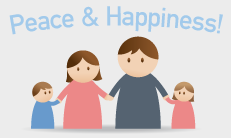 Managing ADHD Behaviors with Child Directed Interaction Skills
Managing ADHD Behaviors with Child Directed Interaction Skills
Young children with ADHD tend to be impulsive, hyperactive and inattentive. These symptoms can seem like misbehavior-but they are just the symptoms of ADHD. Children with ADHD do not like the symptoms any more than anyone else does. It helps to remember that THEY do not have ADHD on purpose. Sometimes it is even harder for them to understand they don’t do ADHD behaviors on purpose. The lists below describe the behaviors that ARE the symptoms of ADHD. If your child has ADHD, these behaviors will seem very familiar to you.
IMPULSIVE BEHAVIORS
- Interrupting your conversation
- Grabbing toys out of your hands
- Answering before you finish your question
- Not waiting their turn
- Having trouble waiting
HYPERACTIVE BEHAVIORS
- Running around the room
- Becoming very ‘wound up’ during play time
- Playing roughly with toys
- Dropping things
- Bouncing and Fidgeting
- Talking too loudly
INATTENTIVE BEHAVIORS
- Daydreaming when they should be listening
- Paying attention to something else when they should be listening
- Making noises when they should be quiet
- Not finishing what they start
- Forgetting what they were saying or doing
- Changing activities quickly
Many people find these behaviors annoying or irritating, so parents often want to do something to stop them from happening. However, punishing your child usually does not work. It often just upsets everybody more. WHAT CAN YOU DO?
IT’S ALL ABOUT ATTENTION
Attention is tricky because it does not matter if a particular behavior (symptom) gets negative attention or positive attention. Both kids of attention cause the symptom to happen more often. THE ONLY WAY NOT TO GIVE ATTENTION TO SOMETHING IS TO IGNORE IT TOTALLY.
ACTIVE IGNORING is the name of a discipline technique that is often the best way to deal with ADHD behaviors. If you actively ignore these behaviors, every single time they happen, you can decrease how often they occur. ACTIVE ignoring is not easy.
One reason that ignoring is so hard is that when you ignore something that used to work well at getting your attention, things will get worse at first. It is a law of nature.
If children lose the attention they normally get when they “do” some ADHD behavior, the logical way to get back your attention is to do the same thing that always worked before, but to do it more intensely. Losing your attention is like a powerful punishment. This is the time to let your child know how they can get the attention they need, with opposite positive behavior!
HOW TO IGNORE ADHD BEHAVIORS
- Avoid any reaction to your child’s ADHD behavior (don’t look, frown or say anything related to the behavior)-act as though it is not happening.
- Once you begin to ignore some behavior, you must continue to ignore it until it stops
- As soon as the behavior stops, immediately give attention to some other, positive behavior and try to give attention to a positive opposite.
HOW TO PAY ATTENTION TO POSITIVE OPPOSITES
- As soon as an ADHD behavior stops, look at the child with a friendly look and comment on what the child is doing that is the opposite of the ADHD behavior.
- Any time you see behavior that is opposite to the ADHD behaviors give the child BIG labeled praises!
Adapted from Eyberg, S.M., Calzada, E., Brinkmeyer, M., Querido, J., & Funderbunk, B. W., (2003). In L. FandeCreek & T.>. Jackson (Eds). Innovations in Clinical practice: Focus on Children and adolescents (pp. 171-172_. Sarasota, FL: Professional Resource Press.
